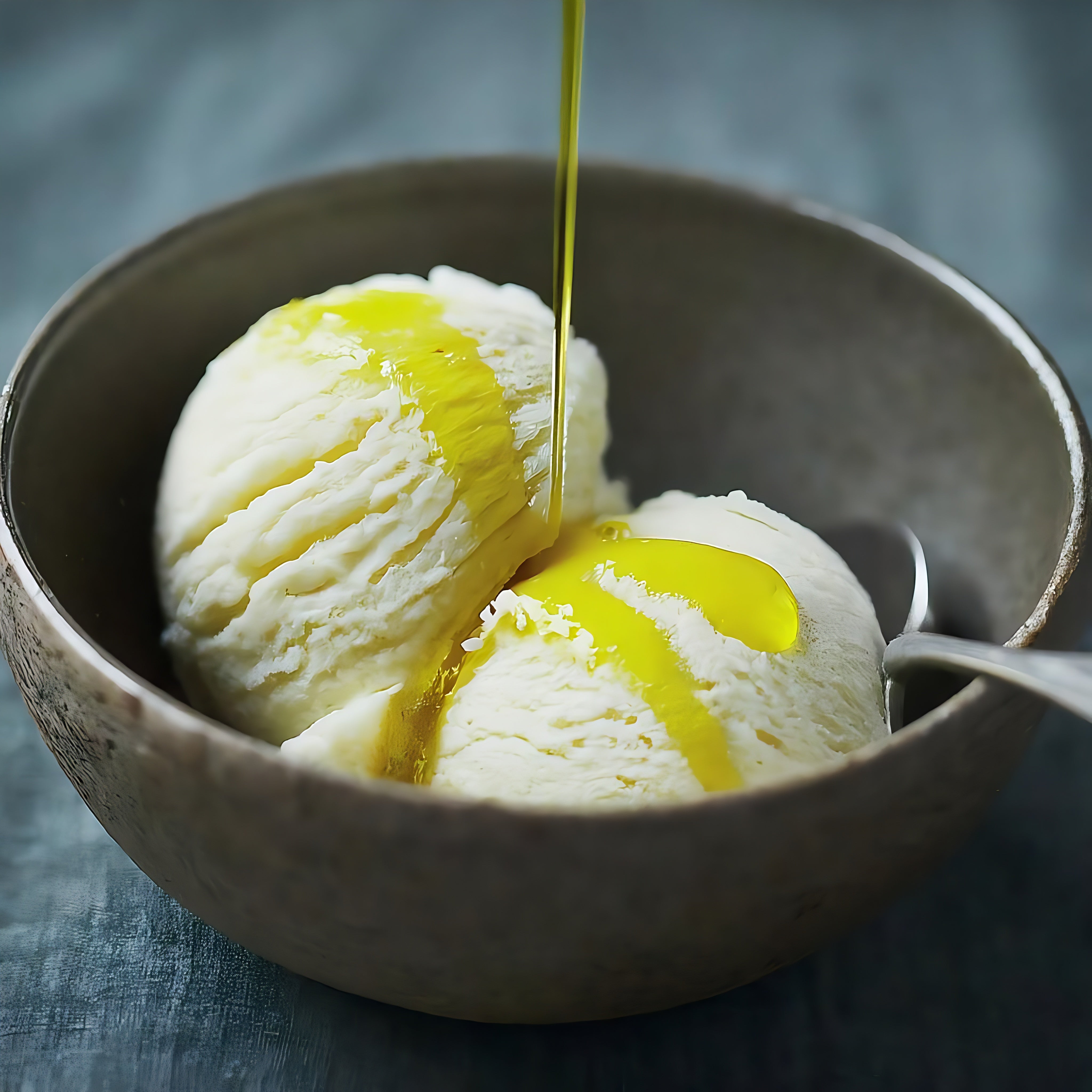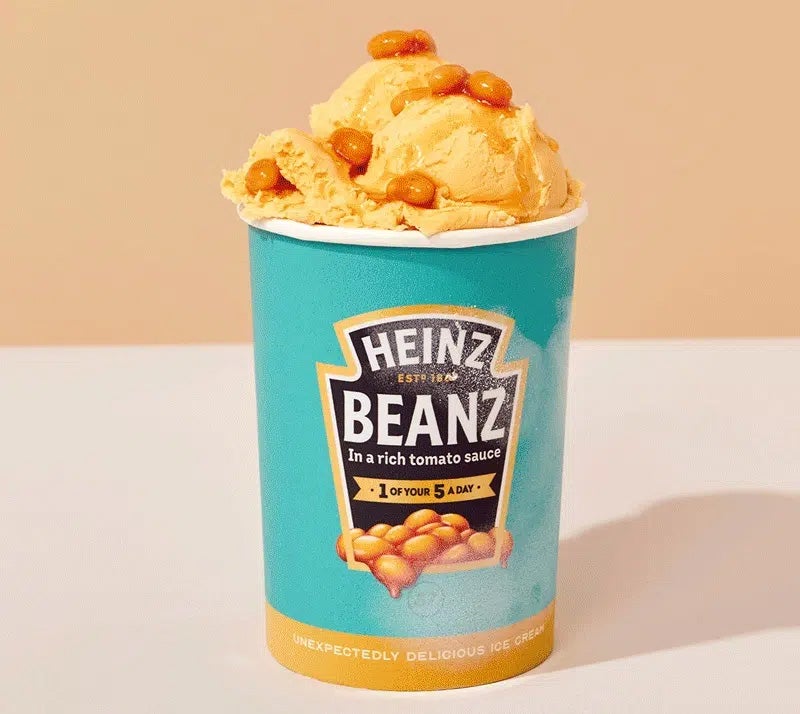Caviar, baked beans and the bizarre ice cream toppings you actually should try
Gone are the days when ice cream toppings involved a simple choice: chocolate or strawberry sauce. Thanks to Dua Lipa, TikTok and the country’s top Michelin-starred chefs, the boundaries of what constitutes dessert have been redrawn. Hannah Twiggs has the scoop


Your support helps us to tell the story
From reproductive rights to climate change to Big Tech, The Independent is on the ground when the story is developing. Whether it's investigating the financials of Elon Musk's pro-Trump PAC or producing our latest documentary, 'The A Word', which shines a light on the American women fighting for reproductive rights, we know how important it is to parse out the facts from the messaging.
At such a critical moment in US history, we need reporters on the ground. Your donation allows us to keep sending journalists to speak to both sides of the story.
The Independent is trusted by Americans across the entire political spectrum. And unlike many other quality news outlets, we choose not to lock Americans out of our reporting and analysis with paywalls. We believe quality journalism should be available to everyone, paid for by those who can afford it.
Your support makes all the difference.It’s 30 degrees outside and the sun is shining. You open the freezer and pull out a tub of baked bean ice cream. The perfect thing to cool you down.
Doesn’t take your fancy? How about a scoop of salted caramel sprinkled with stilton, washed down with a glass of port? Walnut ice cream and caviar, anyone?
Welcome to the ice cream renaissance, where the more bizarre the flavour, the better. Gone are the days when ice cream toppings involved a straightforward choice: strawberry or chocolate sauce. Possibly some rainbow sprinkles if you were feeling particularly racy. But even the most timeless indulgences must evolve. Videos of people gleefully dousing their soft serve in everything from crispy bacon to hot sauce have gone viral.
Leading the charge is pop star slash gastronomic revolutionary Dua Lipa. Speaking to Radio 1 in January, she extolled the merits of adding olive oil and sea salt to vanilla ice cream. “I’ve had so many people try it, and everyone has switched to the dark side,” she said. TikTok had a field day.
Me? I was born on the dark side. Nothing appeals to me less after finishing a perfectly salted meal than a bowl of something gloopy, cloying and sickly sweet. But ice cream and, say, blue cheese? Those are two of my favourite things. I know, I know: it sounds gross. But there’s something wonderfully palate-perplexing about a dessert that blends wildly incongruous flavours and textures. Besides, sweet and salty is already an accepted winning combo. Obviously, we love that with our popcorn. Churn in some ice cream and is it really so different?
Olive oil and ice cream has, in fact, been a mainstay in the olive-growing regions of Italy and Spain for centuries. And they are fitting bedfellows: the earthy, fruit bitterness of the oil cuts through the creaminess of the ice cream, and the oil’s texture thickens pleasingly against the cold, enhancing the overall mouthfeel of each bite.
The innovation doesn’t stop at olive oil, though. I haven’t stopped thinking about the frozen Tunworth cheese, with a consistency not dissimilar to ice cream, that I ate at L’Enclume, Simon Rogan’s three-star Cumbria restaurant, last year. “Put cheese in ice cream and everyone loves it!” head chef of Rogan’s Aulis Charlie Tayler told me recently. “Savoury and unusual flavourings of ice cream are great because they allow an alternative way of presenting flavours through different temperatures.”

While I might be among the minority of people who think, “This ice cream could do with a bit of cheese”, the pairing is far from unpopular. At the two-Michelin-star Moor Hall in Lancashire, chef Mark Birchall serves a sweet cicely ice cream with strawberries and ragstone, a soft goat’s cheese. “The complexity of the cheese works well with the fruit and acidity and nutty flavours as the cheese develops,” Birchall tells me.
Both L’Enclume and Moor Hall serve their ice creams as palate cleansers rather than desserts. This isn’t a gimmick, either. The word “dessert” didn’t even exist until the 17th century – before that, they were known as entremets, or dishes served between courses that could either be sweet or savoury. That said, anyone from any century would surely question caviar on ice cream. That’s too far, right?
Caviar works well in desserts for the same reason that people often pair miso or sea salt with sweet things – it adds a real hit of umami and creates a more complex flavour
At Fitzrovia’s two-star Kitchen Table, James Knappett is putting fish eggs on walnut ice cream. One bite is like that moment in Ratatouille when Remy realises strawberries and cheese are a perfect match. “Caviar works well in desserts for the same reason that people often pair miso or sea salt with sweet things – it adds a real hit of umami and creates a more complex flavour,” Knappet says. Take it from me: it’s delicious. I’ll be recreating it at home.
Clearly, the boundaries of what constitutes a dessert have been redrawn, for better or worse. Not everyone will love the chorizo ice cream with dark chocolate mousse, sherry caramel and crumble at Portuguese restaurant Joia in Battersea, for example, though I thought it was a marvel. Clearly, they’re catering to savoury apologists like myself. “Chorizo ice cream works well if you have other elements on the plate to balance it out,” says concept chef Henrique Sá Pessoa. “It’s not a dish that’s going to be for everyone but people who are more intrigued by an adventurous combination love it.”
Presumably, you’d have to be really adventurous to try Branston Piccalilli, the aforementioned baked beans or soy sauce-flavoured ice cream. That’s what’s on offer at full-time designer, part-time tastebud terrorist Anya Hindmarch’s The Ice Cream Project, back for its third year in Belgravia. You can even partake in a blind tasting, because who doesn’t want a side of trauma with their ice cream? Oh, and there’s an oyster-flavoured ice cream at Michelin green-starred Wilson’s in Bristol. Sort of like a bivalve-flavoured cherry on top.
From Michelin-starred kitchens to celebrity cravings, one thing is clear: ice cream, that beloved childhood treat, has grown up. And the popularity of all its weird and wonderful toppings, whether it be olive oil, stilton, baked beans or oysters, serves as a reminder that the simplest ingredients often yield the most profound flavours. Or, at least, a very good story to tell.
Join our commenting forum
Join thought-provoking conversations, follow other Independent readers and see their replies
Comments